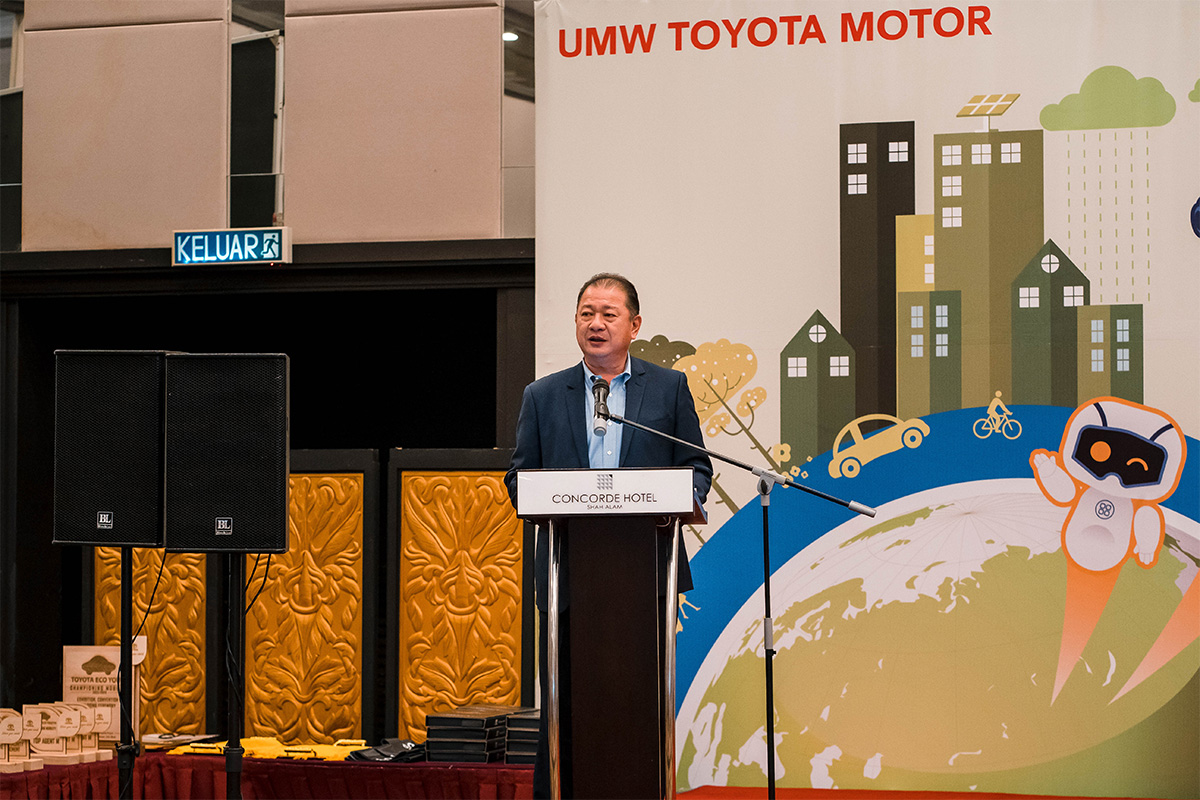
KUALA LUMPUR : The news that Sime Darby Plantation Bhd has been cleared of accusations of using forced labour by US authorities is a definite positive for the plantation group, according to analysts.
But the impact on the group’s earnings and share price will likely be negligible, they said.
As such, Hong Leong Investment Bank kept its earnings forecasts and “hold” rating of the stock, as well as its target price (TP) of RM4.49, on an unchanged 18 times core earnings per share of 24.9 sen for the financial year ending Dec 31, 2024 (FY2024).

Toyota Eco Youth Participants Champion Mobility For All Through Sustainable Innovations
The Toyota Eco Youth (TEY) 2022/2023 edition concluded today on a high note with the Ministry of Education Malaysia (MOE) and UMW Toyota Motor representatives attending the closing ceremony and exhibition at Concorde Hotel, Shah Alam.
At the time of writing on Tuesday (Feb 7), Sime Darby Plantation was trading four sen or 0.9% higher at RM4.47 a share, with 667,600 shares traded, giving it a market capitalisation of RM30.91 billion.
“While the latest development is a positive one, we reckon that the impact on Sime Darby Plantation (both in terms of earnings and its share price) will likely be minimal, as: i) the WRO (withhold release order) had insignificant impact on Sime Darby Plantation’s earnings earlier; and ii) its share price has run up by over 15% since October 2022,” the research house said in a note on Tuesday.
Likewise, Kenanga Research kept its “underperform” call on the stock.
“After being prohibited for two years, Sime Darby Plantation can resume exporting palm product exports to the US again, effective Feb 3, 2023. The financial impact is negligible, but it does bring closure to a serious allegation.
“However, we maintain our ‘underperform’ call and TP of RM3.65, as easier crude palm oil (CPO) prices amid cost inflation are capping prospects of margin expansion moving ahead,” said Kenanga analyst Teh Kian Yeong, adding that the US is a small market commercially, not only for Sime Darby Plantation, but for palm oil as a whole.
“Although the US is a big edible oil market, it uses only one to two million tonnes of palm oil each year, of which only 0.6 million tonnes come from Malaysia. As such, Malaysia’s palm oil deliveries to US often comprise just 3% of the country’s total palm oil exports,” Teh said.
He further noted that the palm oil trade had become increasingly regional, with the Asia-Pacific producing 90% and consuming 60% of the entire world’s palm oil output.
“Indonesia is by far the single largest producer (50 million tonnes) and user (20 million tonnes) of palm oil. A quarter of the world’s palm oil is absorbed by Indonesia alone, followed by India (11%) and China (8%). Likewise, the Asia-Pacific is also the main market for edible oils, rather than the US or EU, though they are still sizeable markets,” he added.
Meanwhile, Kenanga is keeping its CPO price forecasts for Sime Darby Plantation at RM4,000 per tonne for FY2022, and RM3,800 a tonne for FY2023, with profit after taxation and minority interest and core earnings per share also maintained, pending the release of the group’s fourth quarter of FY2022 (4QFY2022) results on Feb 17.
Similarly, Maybank Investment Bank is keeping its “hold” rating of Sime Darby Plantation, with an unchanged TP of RM4.38, as it noted that the plantation group’s share price had already largely priced in the latest development.
Nevertheless, it noted that the development is an affirmation of the right measures that Sime Darby Plantation had taken, and that the group is on track to meet its forecast FY2022 core net profit, with no surprises in the coming 4QFY2022 results.
“We expect Sime Darby Plantation to turn in better quarter-on-quarter core net profit of an estimated RM597 million for 4QFY2022 (+47% quarter-on-quarter; down 10% year-on-year), which would be on track to meet our/the consensus FY2022 core net profit forecasts of RM2.271 billion/RM2.254 billion. The stronger q-o-q performance would be driven by: i) higher sales volume (especially in Papua New Guinea and Indonesia) owing to the huge inventory on its balance sheet as at end-September 2022; ii) forward sales locked in earlier at a higher-than-expected CPO spot average selling price in 4QFY2022; and iii) lower unit cost of production owing to a slowdown in manuring activities in 4QFY2022 due to wet weather.
“As for the reported 4QFY2022 fresh fruit bunch (FFB) output of 2.073MT (down 2% y-o-y; down 4% q-o-q), it was better than expected, lifting FY2022 FFB output to 8.21MT (down 10% y-o-y), which is at 103% of our forecast,” the research house added.